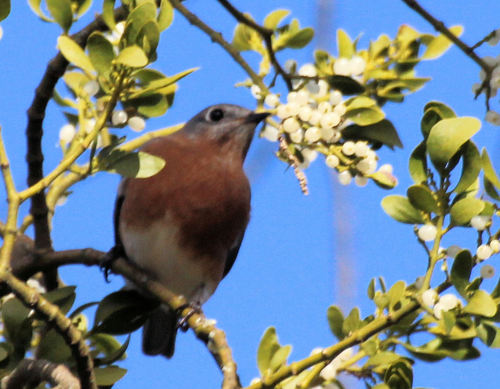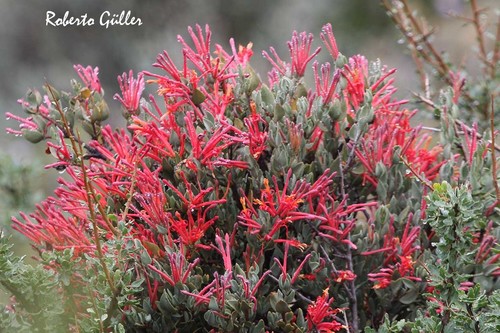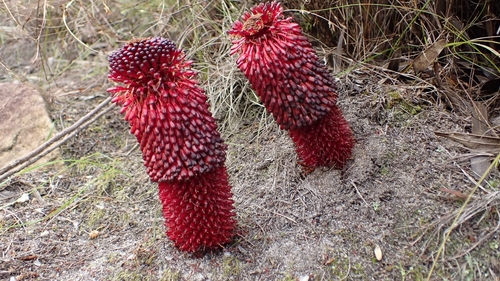Opiliaceae
(No common name widely used)
Opiliaceae is a family of flowering plants in the order Santalales, comprising about 10-12 genera and 30-35 species of evergreen trees, shrubs, and lianas. Members of this family are hemiparasites, meaning they photosynthesize but obtain water and mineral nutrients from the roots of host plants via specialized structures called haustoria. They have a pantropical distribution.

Overview
The Opiliaceae family is part of the Santalales, an order known for containing many parasitic and hemiparasitic lineages, including mistletoes (Loranthaceae, Santalaceae p.p.). Opiliaceae species are typically woody root hemiparasites found in tropical forests and woodlands across Africa, Asia, Australia, and the Neotropics. While they possess green leaves and perform photosynthesis, they rely on tapping into the root systems of other plants to supplement their water and nutrient uptake.
The family is characterized by its simple, alternate leaves, small inconspicuous flowers often borne in racemes or spikes, and fleshy, single-seeded drupaceous fruits. Flowers typically have parts in 4s or 5s, with stamens positioned opposite the tepals (undifferentiated perianth segments) and often a prominent nectar disc.
Economically, some species have local uses. For example, the leaves and fruits of some Opilia and Champereia species are eaten in parts of Africa and Southeast Asia. However, the family is not of major global economic importance. Its primary significance lies in its role within tropical ecosystems and its representation of the root parasitic habit within the Santalales.
Quick Facts
- Scientific Name: Opiliaceae Valeton
- Common Name: None widely used
- Number of Genera: Approximately 10-12 (e.g., Opilia, Agonandra, Cansjera, Champereia, Urobotrya)
- Number of Species: Approximately 30-35
- Distribution: Pantropical (Africa, Madagascar, Asia, Malesia, Australia, Central and South America)
- Evolutionary Group: Eudicots - Superasterids - Santalales
Key Characteristics
Growth Form and Habit
Members are evergreen trees, shrubs, or lianas. Crucially, they are root hemiparasites, forming connections (haustoria) to the roots of host plants to obtain water and mineral nutrients, while still maintaining photosynthetic leaves.
Leaves
Leaves are typically simple, arranged alternately along the stem, and usually have entire (smooth) margins. They are often somewhat leathery (coriaceous) in texture. Stipules are absent. In some species, leaves can be reduced or scale-like.
Inflorescence
Flowers are borne in axillary or sometimes terminal inflorescences, which can be racemes, spikes, panicles, or umbels. The inflorescences and individual flowers are often small and inconspicuous.
Flowers
Flowers are small, actinomorphic (radially symmetrical), and can be bisexual or unisexual (with plants being monoecious or dioecious). They are typically 4- or 5-merous.
- Perianth: Consists of a single whorl of 4 or 5 tepals (undifferentiated sepals/petals). The tepals are usually free or slightly fused only at the very base, and often greenish or yellowish.
- Androecium: Consists of 4 or 5 stamens positioned directly opposite the tepals. Filaments are free.
- Nectar Disc: An intrastaminal nectar disc (located inside the whorl of stamens) is often present, sometimes lobed.
- Gynoecium: The ovary is usually superior (sometimes half-inferior), composed of fused carpels forming a single locule (1-locular). There is typically a single, pendulous ovule attached near the apex of the locule. The style is usually short or absent, and the stigma is simple or slightly lobed.
Fruits and Seeds
The fruit is a drupe – a fleshy, typically brightly colored (red, orange, yellow) fruit with a single seed enclosed within a hard or leathery layer. The seed notably lacks a seed coat (testa) but possesses abundant endosperm.
Chemical Characteristics
Some species are known to contain polyacetylenes, a class of organic compounds. Like many parasitic plants, their chemistry can be influenced by the host plants they parasitize.
Field Identification
Identifying Opiliaceae in the field relies on recognizing the combination of their parasitic habit and specific morphological features, within their tropical range:
Primary Identification Features
- Habit: Woody tree, shrub, or liana exhibiting root hemiparasitism (possessing green leaves but attached to host roots via haustoria – finding haustoria may require excavation and is often difficult).
- Leaves: Alternate, simple, entire margins, usually leathery, lacking stipules.
- Flowers: Small, 4- or 5-merous, with a single whorl of tepals.
- Stamens: Numbering 4 or 5, positioned opposite the tepals.
- Ovary: Usually superior, 1-locular with a single ovule.
- Fruit: Fleshy drupe, 1-seeded.
Secondary Identification Features
- Inflorescence: Often racemes or spikes, axillary.
- Nectar Disc: Presence of a disc inside the stamens (requires magnification).
- Distribution: Restricted to tropical regions worldwide.
Seasonal Identification Tips
- Flowering/Fruiting Period: Essential for confirmation. Flowers are small, but the presence of stamens opposite the tepals is key. Brightly colored drupes can be conspicuous when present.
- Vegetative State: The combination of alternate, simple, entire, leathery leaves on a woody plant in the tropics is common; suspecting Opiliaceae often requires finding flowers/fruits or confirming parasitic connections.
Common Confusion Points
Distinguishing Opiliaceae from other tropical woody plants, especially other parasitic families in Santalales:
- Icacinaceae: Not parasitic, flowers often have distinct sepals and petals, stamens usually alternate with petals.
- Santalaceae (s.l.): Also root or stem parasites in Santalales. Differ in details like perianth structure, ovary position (often inferior or semi-inferior in many mistletoe groups), and fruit type (some berries).
- Loranthaceae: Primarily stem parasites (mistletoes), often with more showy flowers, inferior ovary, and berry fruits adapted for bird dispersal.
- Other tropical families with simple, alternate leaves: Requires careful examination of flower structure (tepals, stamen position, ovary).
Field Guide Quick Reference (Tropics)
Look For:
- Woody tree, shrub, liana (root hemiparasite)
- Leaves: Alternate, simple, entire, leathery
- Flowers: Small, 4-5 parts
- Perianth: Single whorl of tepals
- Stamens: 4-5, opposite tepals
- Ovary: Usually superior, 1-locular
- Fruit: Drupe, 1-seeded
Key Distinctions:
- Root hemiparasitic habit
- Stamens opposite tepals
- Superior ovary (usually)
- Absence of stipules
- Pantropical distribution
Notable Examples
Some representative genera within the Opiliaceae family include:

Opilia
(e.g., O. amentacea)
This genus includes shrubs and lianas found in tropical Africa, Asia, and Australia. Opilia amentacea is a scrambling shrub or liana whose leaves and young shoots are sometimes eaten as a vegetable in parts of Africa. Flowers are small, greenish-yellow, often in dense spike-like racemes.

Agonandra
(e.g., A. brasiliensis)
This genus comprises trees and shrubs found in Central and South America. Agonandra brasiliensis is a small tree found in cerrado and dry forest habitats in South America. Its wood is sometimes used locally, and it represents the family in the Neotropics.

Cansjera
(e.g., C. rheedii)
A genus of climbing or straggling shrubs found in tropical Asia and Australia. Cansjera rheedii is a parasitic shrub whose leaves are sometimes used in traditional medicine. Flowers are small, borne in short axillary spikes or racemes.

Champereia
(e.g., C. manillana)
This genus contains a single species, Champereia manillana, a shrub or small tree found in Southeast Asia and Malesia. Its young leaves and inflorescences are edible and consumed as a vegetable ('chemperai' or 'chayote manis') in some regions. Fruits are small, orange-red drupes.
Phylogeny and Classification
Opiliaceae is firmly placed within the order Santalales, a large order within the superasterid clade of eudicots. This order is notable for containing a high proportion of parasitic and hemiparasitic plants, including the well-known mistletoes.
Molecular studies indicate that Opiliaceae is part of the core Santalales group, often showing relationships to families like Santalaceae (sandalwood family, which now includes many former mistletoe families like Viscaceae). The exact relationships among the families within Santalales are complex and have been revised several times with increasing molecular data, but Opiliaceae consistently groups with other root-parasitic or stem-parasitic lineages.
Position in Plant Phylogeny (APG IV)
- Kingdom: Plantae
- Clade: Angiosperms (Flowering plants)
- Clade: Eudicots
- Clade: Superasterids
- Order: Santalales
- Family: Opiliaceae
Evolutionary Significance
Opiliaceae is significant for understanding the evolution of parasitism within flowering plants:
- Parasitic Lifestyle: Represents one of several independent origins of parasitism within the Santalales order, specifically the root hemiparasitic strategy.
- Phylogenetic Link: Helps bridge understanding between different parasitic families within Santalales.
- Biogeography: Its pantropical distribution raises questions about its historical dispersal and diversification across continents.
- Floral Reduction: The small, simple flowers are typical of many parasitic lineages where resources may be allocated differently compared to autotrophic plants.
- Seed Structure: The lack of a seed coat is a characteristic feature shared with some other Santalales families.



